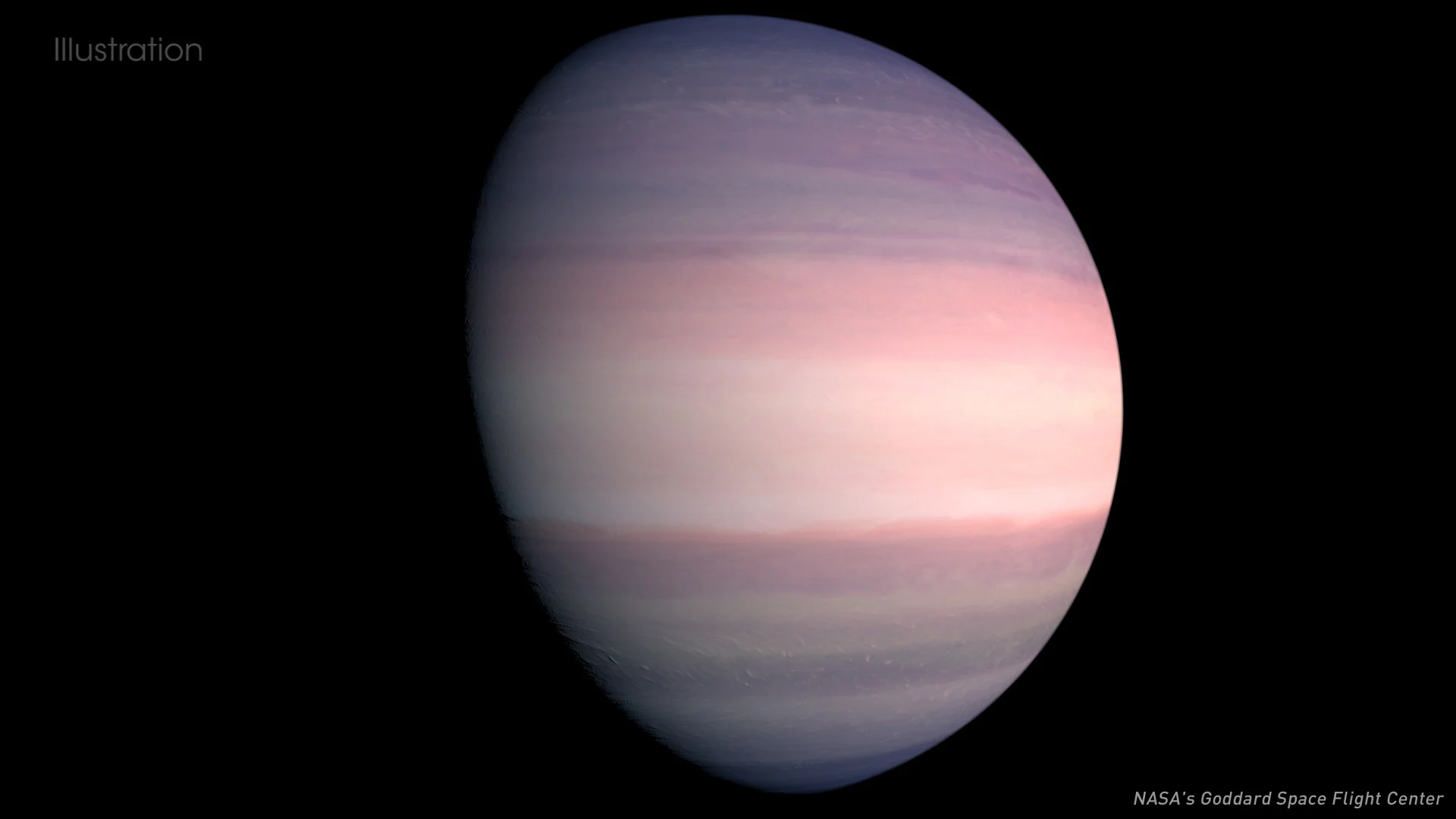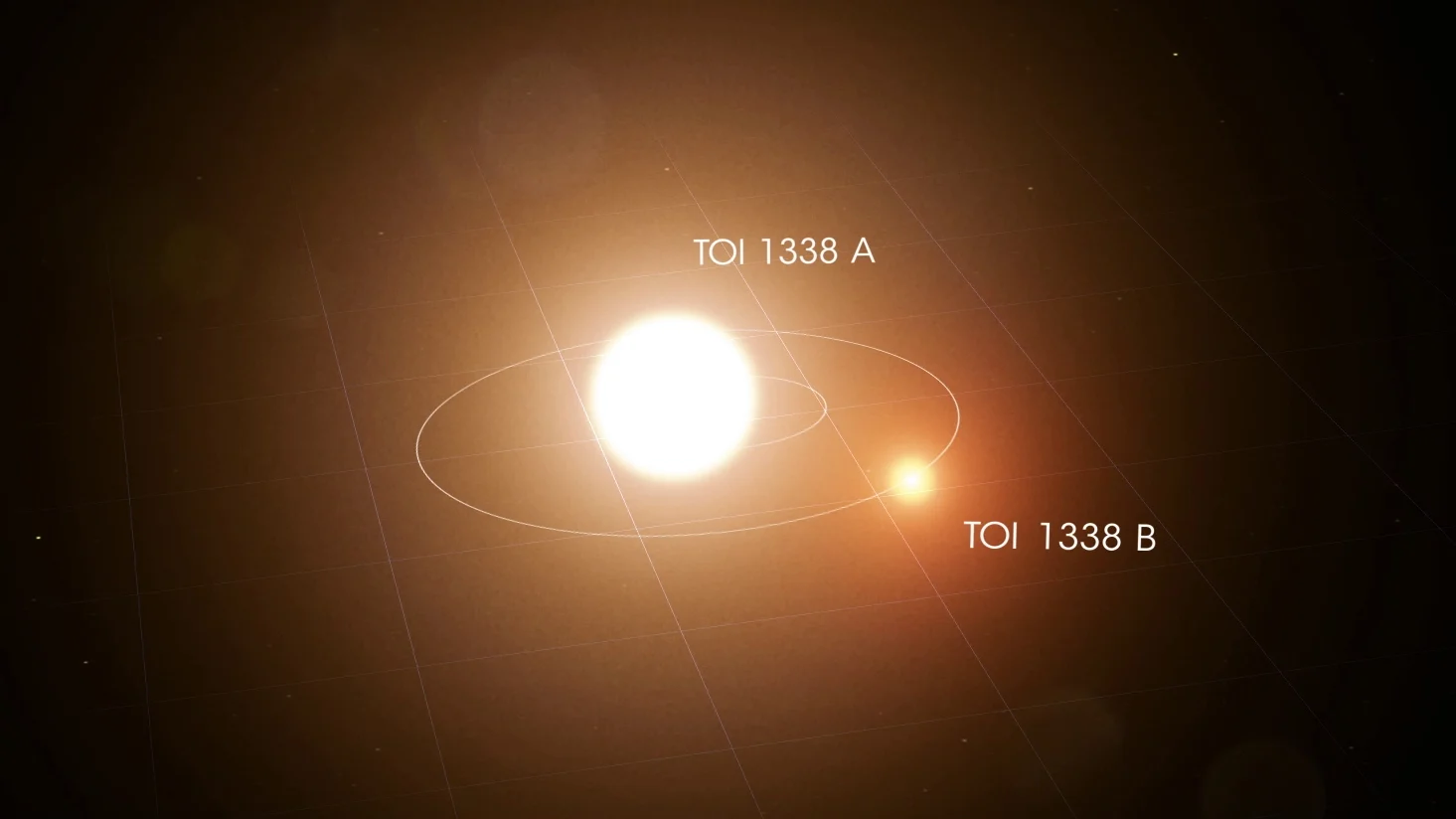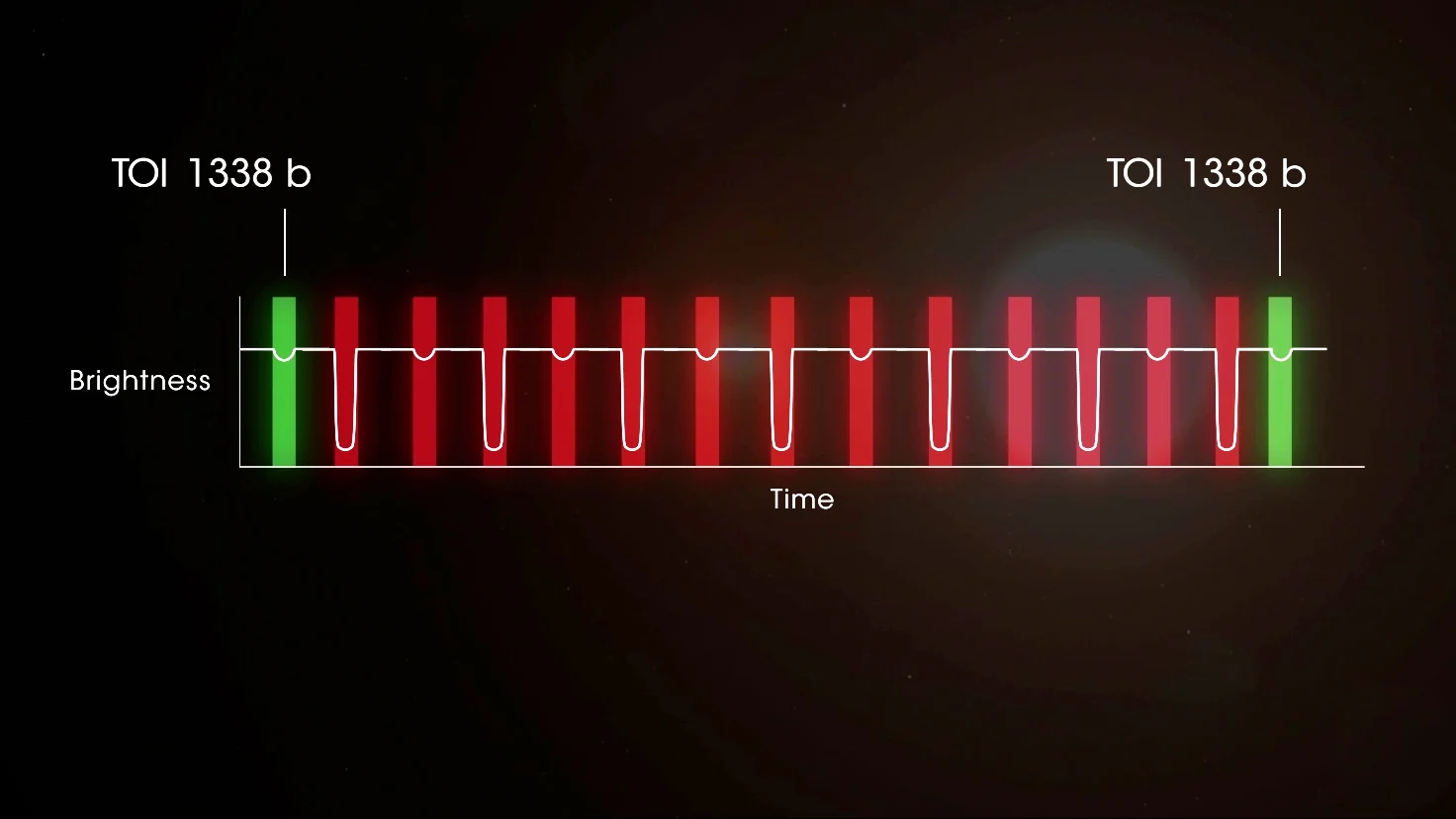
Teenager discovers remarkable alien planet that everyone else missed
The keen eyes of a 17-year-old intern spotted a massive alien world 'hiding' around a binary star
Scientists and volunteers have been sifting through data sent back by NASA's planet huntering telescope looking for nearby alien worlds, and it was the sharp eyes of 17-year-old Wolf Cukier that ended up spotting one exoplanet that everyone else had missed.
The latest discovery from the Transiting Exoplanet Survey Satellite (TESS) is TOI 1338 b, an exoplanet roughly 7 times more massive than Earth, and it was missed - at first - by all who had looked over the data for its star system. TESS' job is to look for alien planets around the stars closest to Earth. It does this by recording the brightness of those stars, and capturing 'transits' - when a star's light dims, sometimes repeatedly, due to one or more planets passing in front of it.
The star system in question, TOI 1338, is known to be a pair of stars, located roughly 1,300 light years away from Earth, that form what is known as an 'eclipsing binary'. The two stars - a Sun-like yellow star and a smaller, dimmer companion - are a close binary pair, completing one orbit of each other every 15 days.

This simulation of the TOI 1338 binary shows the two stars and how they orbit each other. Although this shows the two at an oblique angle, the system is, in fact, nearly edge-on to Earth. Credit: NASA's Goddard Space Flight Center
As these two stars orbit around each other, from our perspective, the smaller star passes in front of the larger star and then swings around behind it.
TESS can't differentiate between the two stars, since they are too small and close together. It simply records the relative brightness of the pair, together, and to TESS, they are brightest when they are side-by-side. The pair dim slightly when the smaller companion passes in front of the primary. They dim by a larger amount when the companion passes behind the primary. The video below demonstrates.
According to NASA, it's in these star systems that it is most difficult to find transiting planets. Depending on the relative sizes of the binary stars and any planet orbiting them, the signal of a 'circumbinary' planet can often become lost, or confused with the motion of the stars.
This is illustrated quite well in the diagram below.

The transits recorded by TESS for the TOI 1338 system show regular dimming from the companion star, but for some of the transits, the timing was off. Credit: NASA's Goddard Space Flight Center
This view shows the difference between the eclipsing of the binary stars, and the transiting of the planet. While the relative dimming of the planet transit is roughly the same as when the companion star passes in front of the primary, the timing is different.
It was the keen eyes of 17-year-old NASA intern Wolf Cukier, fresh from his junior year at Scarsdale High School in New York, that picked out this odd timing.
"I was looking through the data for everything the volunteers had flagged as an eclipsing binary, a system where two stars circle around each other and from our view eclipse each other every orbit," Cukier told NASA. "About three days into my internship, I saw a signal from a system called TOI 1338. At first I thought it was a stellar eclipse, but the timing was wrong. It turned out to be a planet."
After making this discovery, a detailed analysis of the system revealed something remarkable.
Right now, TOI 1338 b orbits around its binary parent stars at just the right angle for TESS to see the planet pass directly in front of the binary. In just a little over three years from now, however, in November 2023, this planet will disappear from TESS' view!
Due to the influence of the binary's gravity on the angle of TOI 1338 b's orbit, after November 2023, each time the planet completes an orbit, it will pass either above or below the primary star from our perspective. We won't see it show up again in TESS' view (or whatever new planet hunter we may have by then) until 2031!
Source: NASA | NASA Goddard











